Apples
2 January 2024Choices
One of the great joys of choosing your apple variety is being able to choose for flavour rather than its ability to withstand travelling! A real bonus is that apples are considered one of the easiest fruits to grow! However, the choice can be bewildering as there are so many varieties – Royal Horticultural Society have more than 700 listed! So a few things to consider are:
- Size – if you’ve got plenty of space, this won’t be a worry. However, if space is limited, you can train apples to specific shapes like spindlebush (tall and narrow), stepover (low and narrow – can be used as an edging), espalier or fan (both against the sunny side of a wall or fence). There are even varieties which can be grown in large patio pots.
- Storage – some apples keep well but others deteriorate quickly
- Taste – you may have a favourite “supermarket” apple, but if its origin is shown as an exotic country, it’s best not to try and grow it. Look for varieties which grow well locally.
- Dessert apples tend to be sweet enough to eat straight off the tree (when ripe)
- Cooking apples don’t need to be so sweet as sugar is usually added during cooking
- Pollination – in countries where apple trees are very popular, there is a good chance of a nearby tree being a suitable pollinator. Crab apple trees are also known to be useful pollinators for many apple trees. The Royal Horticultural Society has created a very useful pollination guide for apple trees – this is based on the flowering times of different varieties.
I planted 3 apple trees shortly after moving into my new garden (2010) – Discovery, Kidd’s Orange and Sunset. At least one of these was bought as a “stepover” but I wasn’t careful enough with the pruning and it became a nice bush! The three were chosen to be compatible for pollination and to be sweet enough to eat raw. They all flower from roughly mid April to mid May.
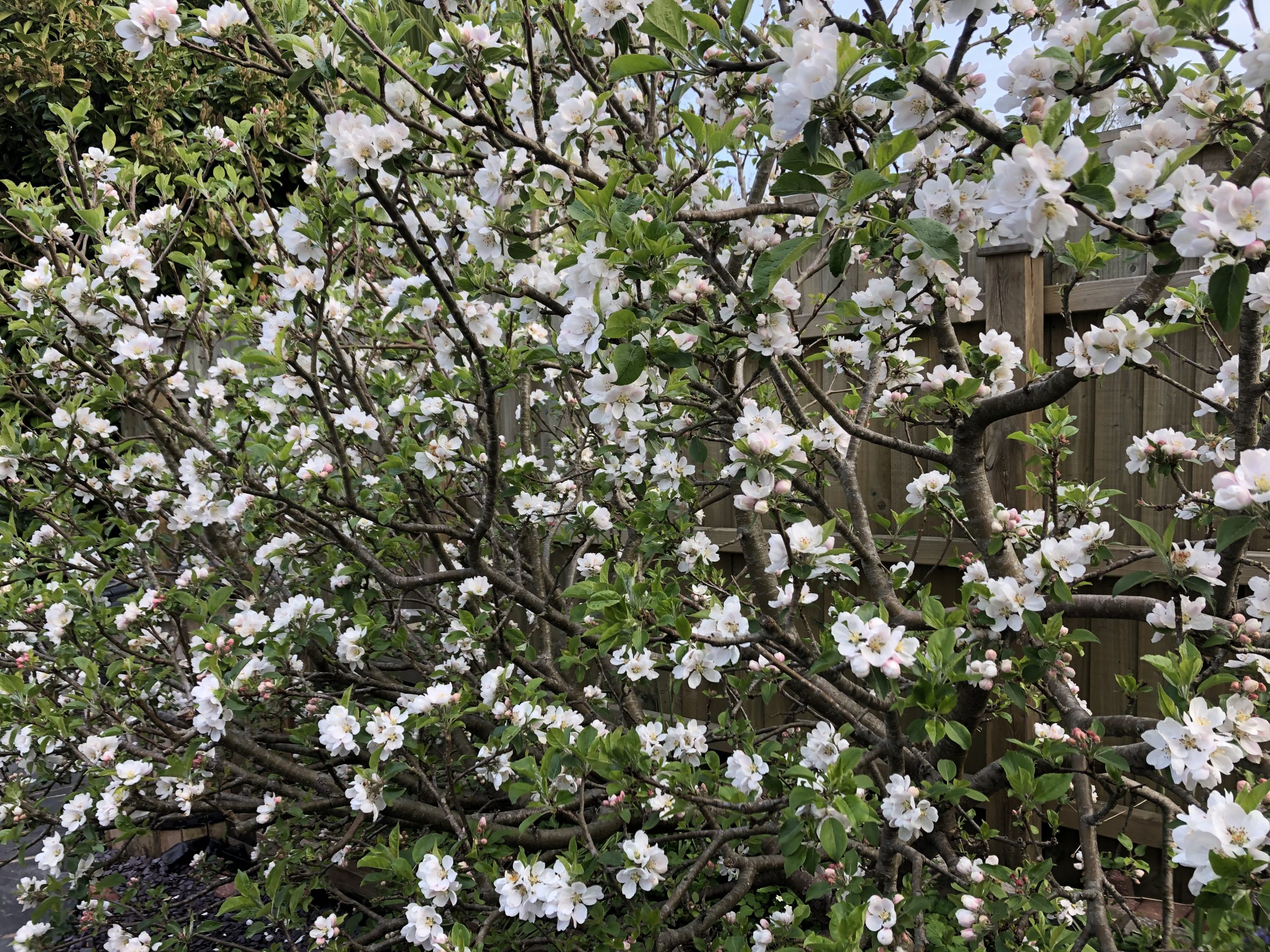
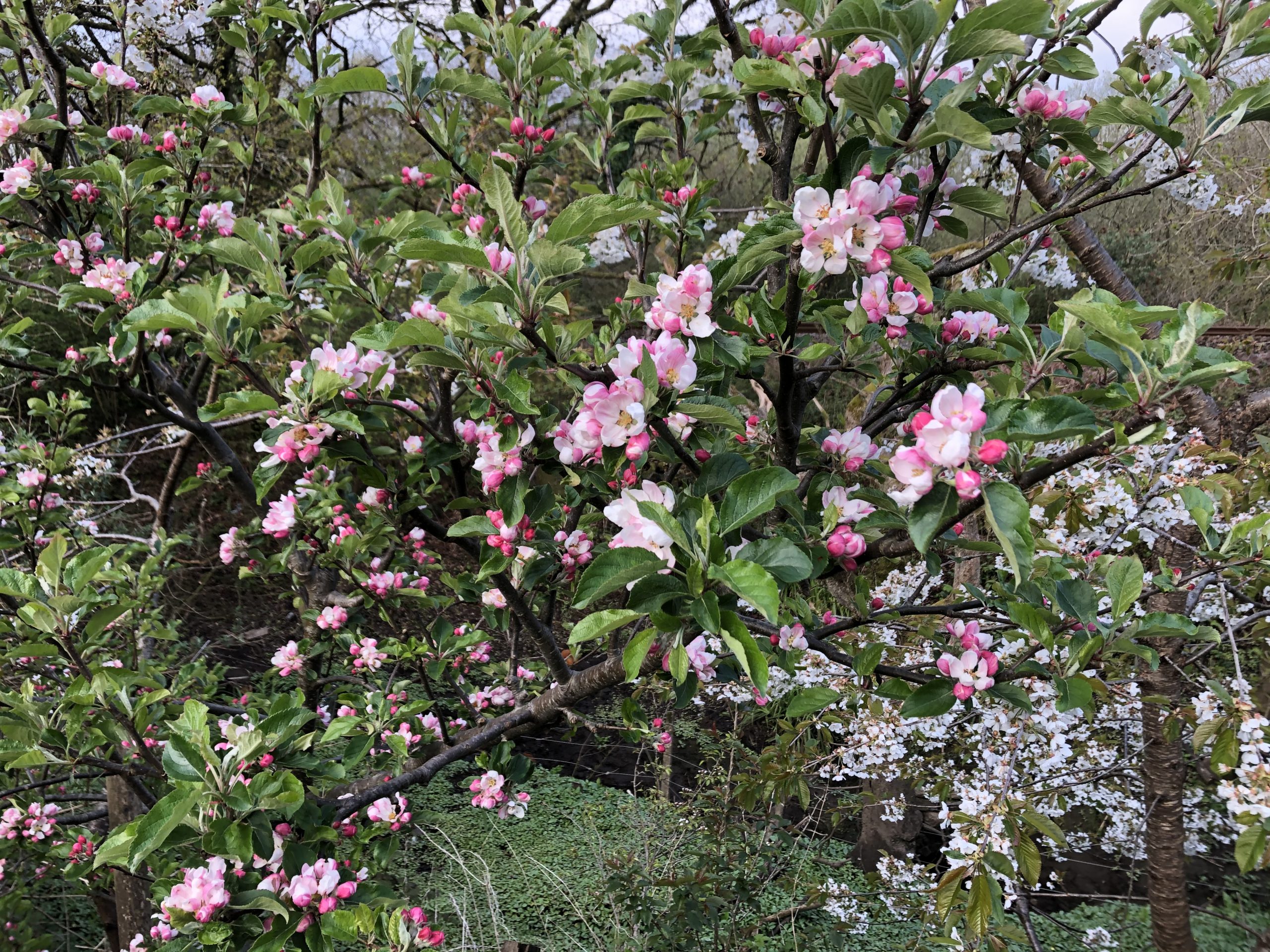
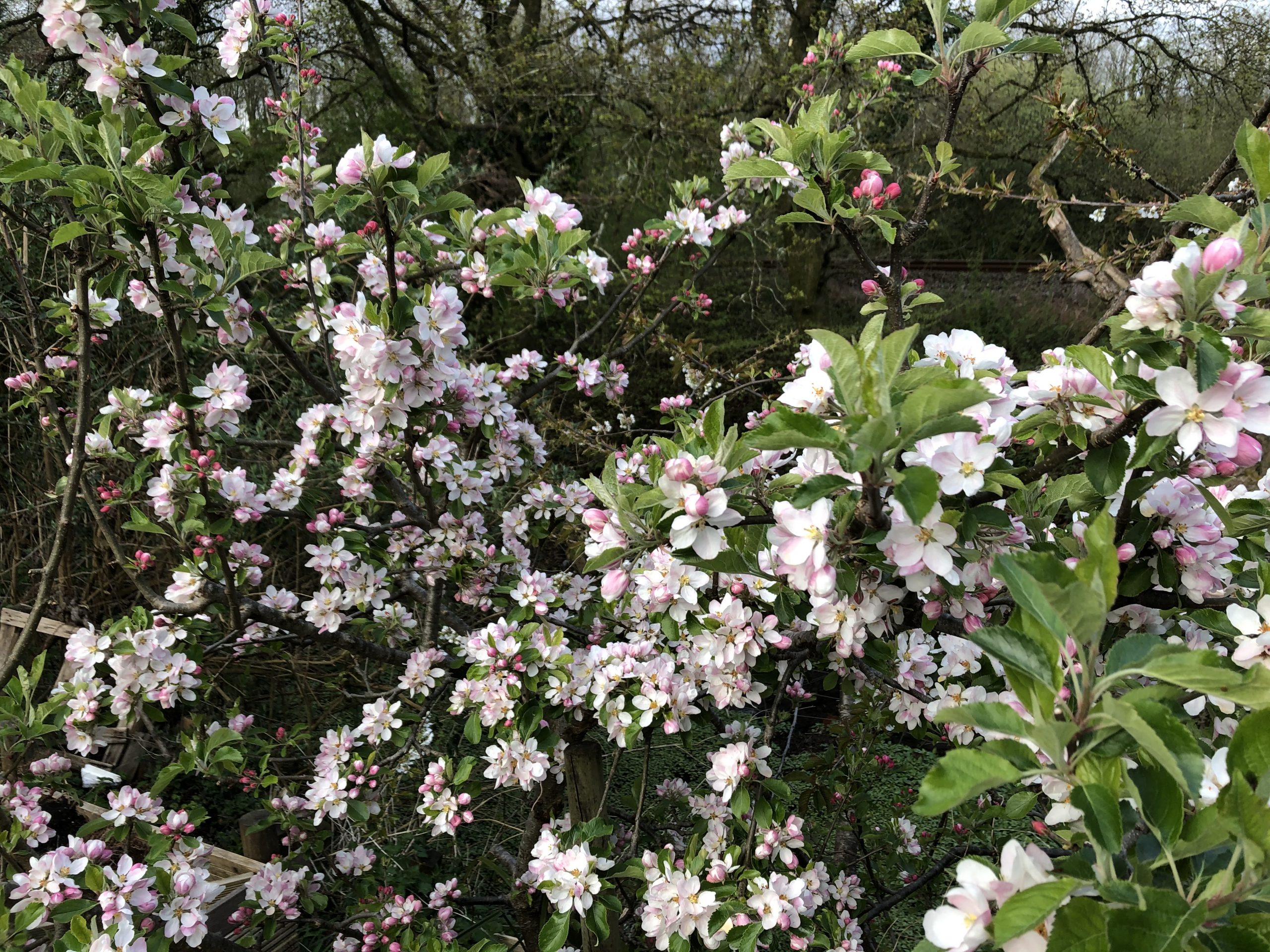
The beautiful blossom is also great for biodiversity
In 2020 I planted a Braeburn apple. This flowers a little later (flowering group 4) but is still compatible with my other trees for pollinating. The fruit from this tree is harvested later in the year (Oct/Nov) and the fruit should keep for 3 months or more. I’ve deliberately removed the fruitlets before they developed for the first couple of years – this is to let the tree develop a strong root system. In 2023, I let it set a few apples, and it can go into full production next year!
Thinnning
By early summer, small fruitlets are visible.
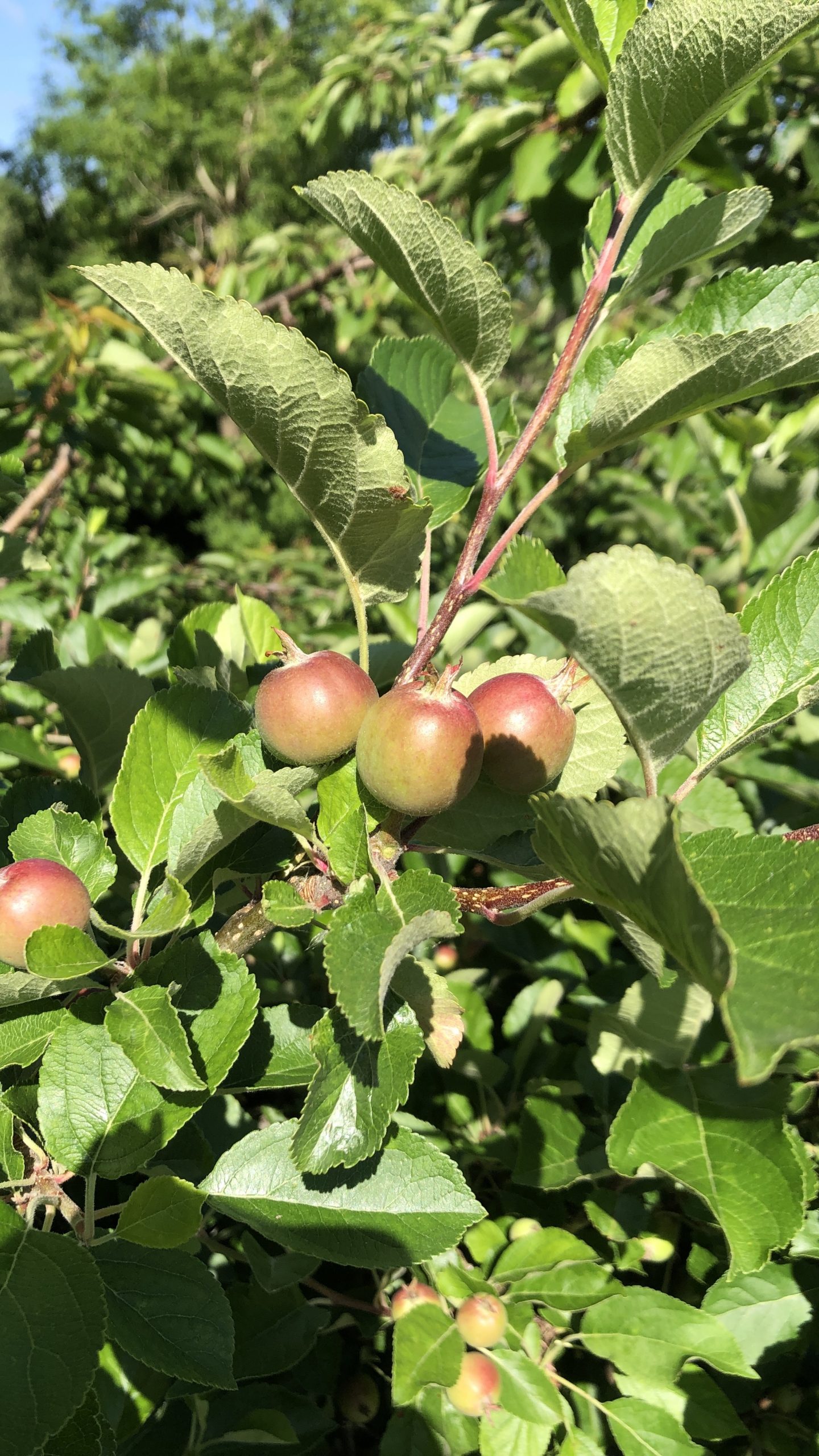
During June it’s common to see several fruitlets fall from the tree. Don’t panic – this is normal and is known as the June drop (although the timing can vary a bit depending on region, weather and variety)! The trees often develop more fruitlets than they can support and this is when the tree chooses which to let go. Even after this, it is advisable to thin the fruit – this prevents the tree from being stressed by over-fruiting (which in turn can lead to the tree producing fruit every second year). You should thin out to approx. 1 apple every 15-20cm. Only keep apples that are undamaged! An apple which has issues in June will not get any better during the summer. In a cluster, you may have to choose which healthy apples to sacrifice – in which case keep the fruit with the best sun exposure.
Don’t throw away the apples you’re thinning! These are perfect for making pectin! In 2023, I used approx. 2.5kg of apple thinnings to create 800ml of pectin from a recipe off the internet. I should have got a bit more pectin but I got distracted while the fruit was stewing and some apples at the bottom of the pot got burned. This pectin is really useful for making jams and jellies for early fruit (eg strawberries!) but you can also freeze some for later in the year.
Harvesting
Around mid July, I drop the net over the Discovery tree. This is a truly delicious apple and there’s plenty of competition between myself, the birds and the squirrels to get them. Despite installing a cage in spring 2022, there is still a bit of damage to fruit near the net, but there’s usually plenty left undamaged. The damaged apples can be used quickly with the damaged bits cut out, the remainder will keep a bit longer. The harvest for this apple starts towards the end of July/ early August.
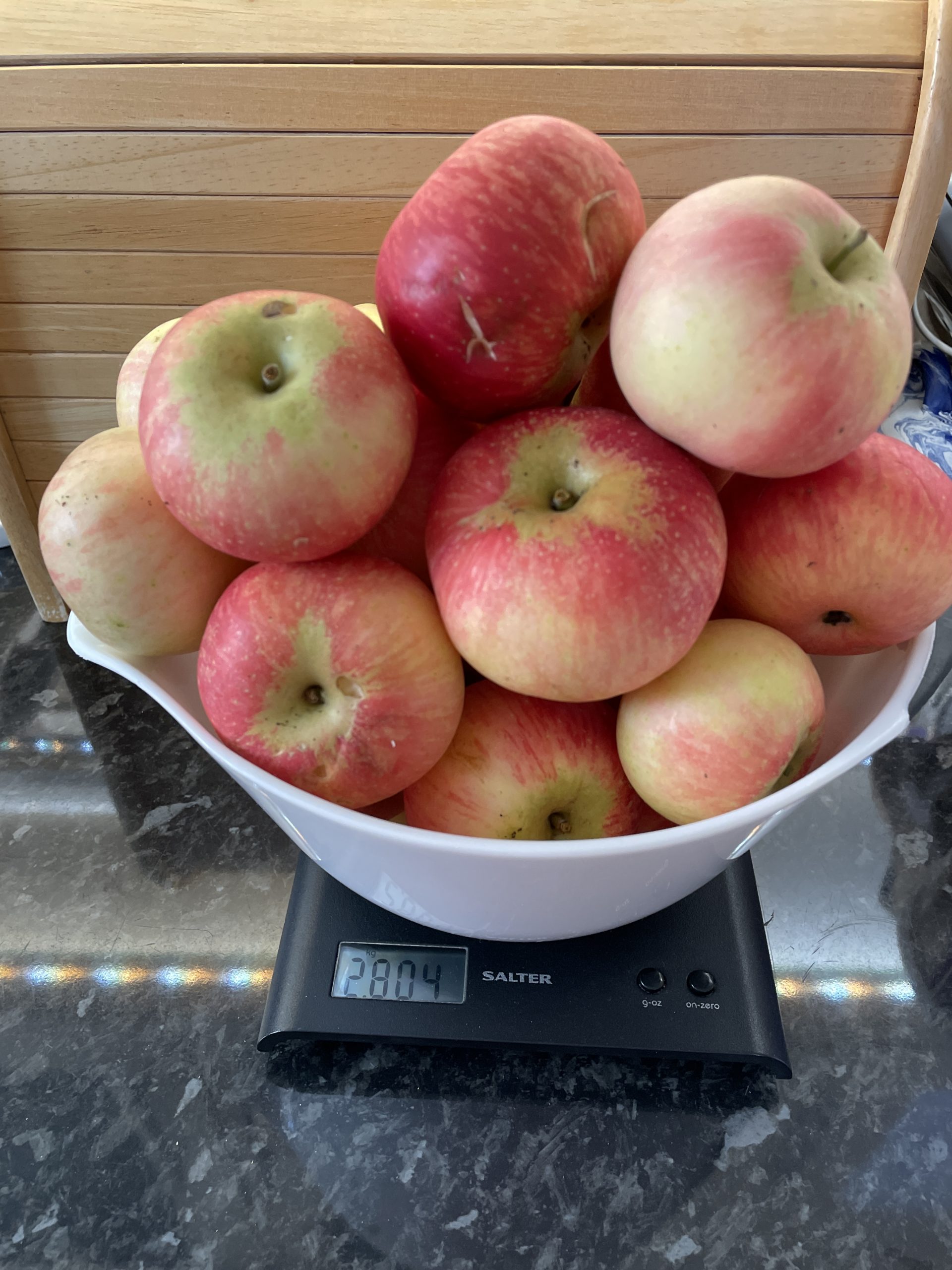
The Sunset and Kidd’s Orange trees are generally harvested in September/October. Despite these being on the wild edge of the garden, I don’t have so much trouble with damaged apples – maybe because these aren’t quite as sweet.
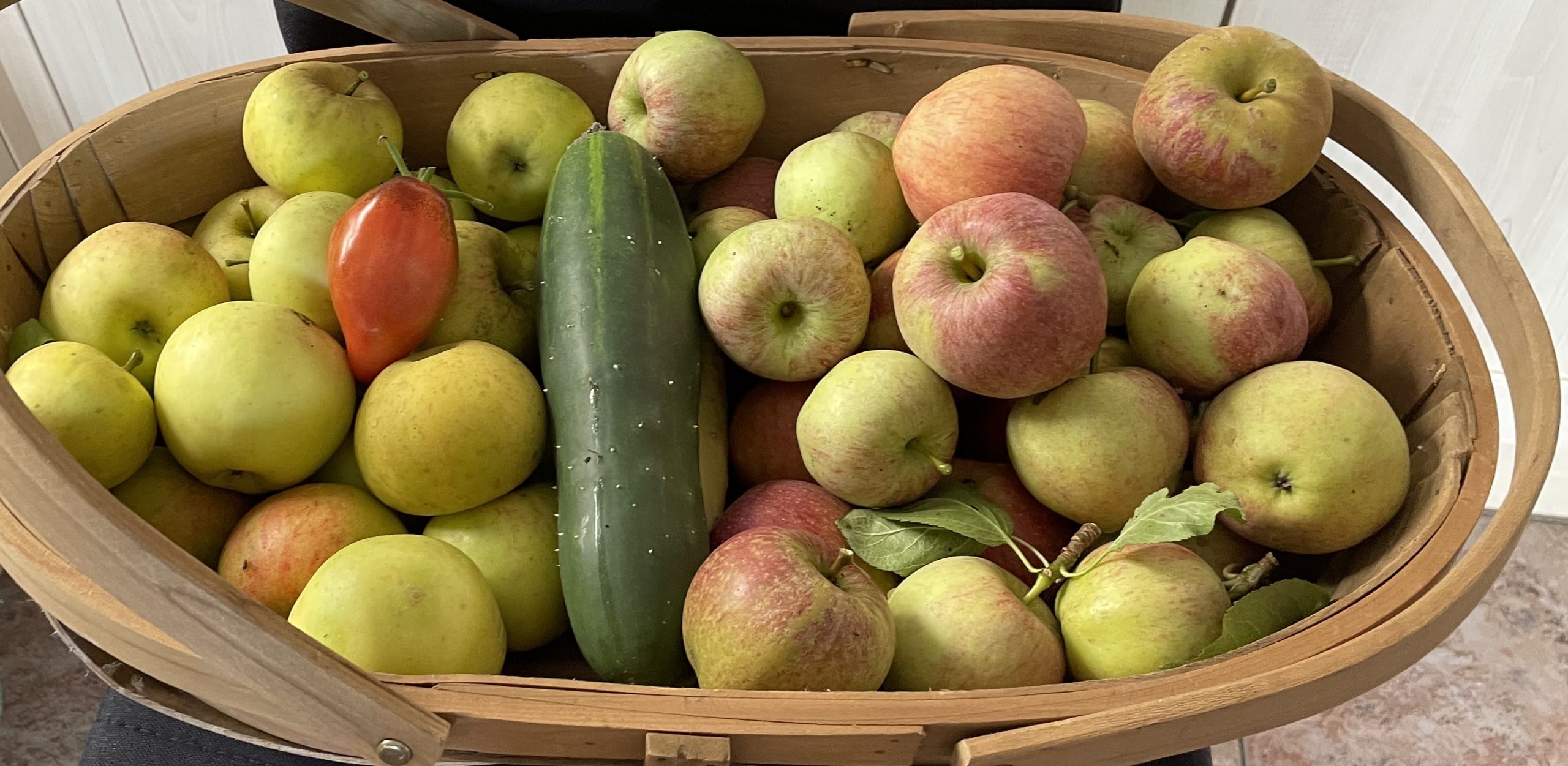
Pruning
Pruning should generally happen during winter and is useful for keeping the tree in good condition and within the space available. I particularly like the RHS pruning advice.
Yield Summary Table
| Crop | Year | Soil Area (m2) | Soil Depth (m) | Annual Harvest (kg) | Mass Yield (kg/m2.d) | £ Yield (£/m2.d) | Calorie Space* (m2) | Protein Space* (m2) |
| Discovery | 2020 | 10.64 | – | 4 | 0.00103 | 0.004 | 3739 | 18695 |
| Discovery | 2021 | 10.64 | – | 5 | 0.00129 | 0.005 | 2978 | 14889 |
| Discovery | 2022 | 6 | – | 10.4 | 0.00475 | 0.017 | 810 | 4052 |
| Discovery | 2023 | 6 | – | 1.031 | 0.00047 | 0.002 | 8170 | 40850 |
| Kidd’s Orange | 2020 | 6.21 | – | 6.9 | 0.00306 | 0.011 | 1258 | 6290 |
| Kidd’s Orange | 2021 | 6.21 | – | 9.6 | 0.00424 | 0.015 | 908 | 4541 |
| Kidd’s Orange | 2022 | 6.21 | – | 14.959 | 0.0066 | 0.024 | 583 | 2914 |
| Kidd’s Orange | 2023 | 6.21 | – | 1.76 | 0.00078 | 0.01 | 4953 | 24767 |
| Sunset | 2020 | 5.29 | – | 5.5 | 0.00286 | 0.01 | 1346 | 6730 |
| Sunset | 2021 | 5.29 | – | 7.5 | 0.00389 | 0.014 | 988 | 1938 |
| Sunset | 2022 | 5.29 | – | 2.039 | 0.00106 | 0.004 | 3642 | 18211 |
| Sunset | 2023 | 5.29 | – | 0.8 | 0.000414 | 0.002 | 9283 | 46415 |
| Braeburn | 2023 | 1.96 | – | 0.367 | 0.000513 | 0.002 | 7497 | 37487 |
2023 was not a good year for Discovery – a long severe winter with late frosts led to a late spring which moved quickly into a hot, dry season in early summer. The combination resulted in very few apples forming. Kidd’s Orange and Sunset were not so badly affected – the low yields in 2023 were due to my being unable to harvest at the right time.